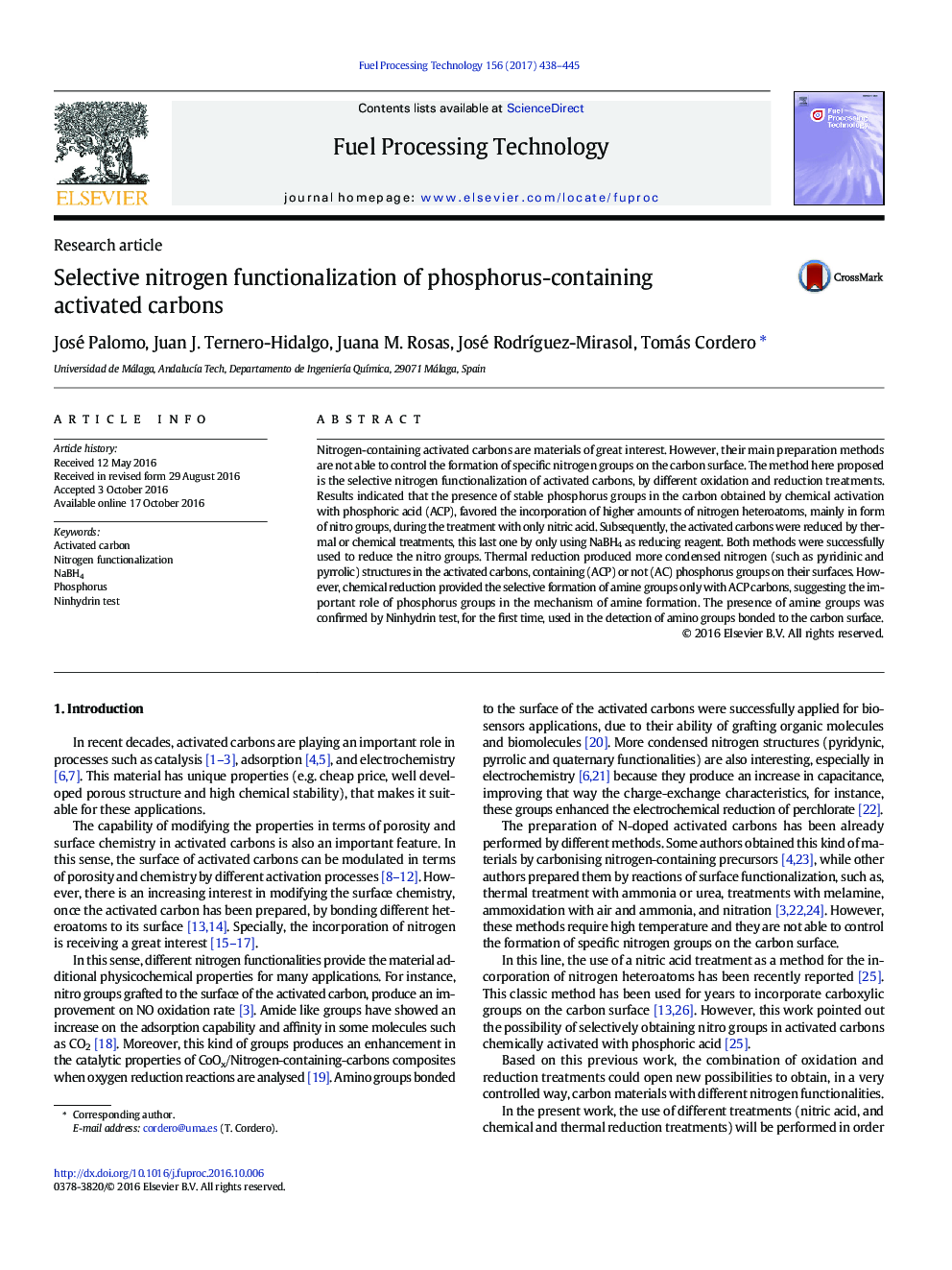| Article ID | Journal | Published Year | Pages | File Type |
|---|---|---|---|---|
| 6476703 | Fuel Processing Technology | 2017 | 8 Pages |
â¢Reduced nitrogen groups were obtained by easy chemical and thermal treatments.â¢Phosphorus groups are involved in the high selectivity to primary amines formation.â¢Primary amines have been determined by an own adaptation of Ninhydrin test.â¢Only NaBH4 was used effectively to obtain primary amines from nitro groups on the AC.
Nitrogen-containing activated carbons are materials of great interest. However, their main preparation methods are not able to control the formation of specific nitrogen groups on the carbon surface. The method here proposed is the selective nitrogen functionalization of activated carbons, by different oxidation and reduction treatments. Results indicated that the presence of stable phosphorus groups in the carbon obtained by chemical activation with phosphoric acid (ACP), favored the incorporation of higher amounts of nitrogen heteroatoms, mainly in form of nitro groups, during the treatment with only nitric acid. Subsequently, the activated carbons were reduced by thermal or chemical treatments, this last one by only using NaBH4 as reducing reagent. Both methods were successfully used to reduce the nitro groups. Thermal reduction produced more condensed nitrogen (such as pyridinic and pyrrolic) structures in the activated carbons, containing (ACP) or not (AC) phosphorus groups on their surfaces. However, chemical reduction provided the selective formation of amine groups only with ACP carbons, suggesting the important role of phosphorus groups in the mechanism of amine formation. The presence of amine groups was confirmed by Ninhydrin test, for the first time, used in the detection of amino groups bonded to the carbon surface.
Graphical abstractDownload high-res image (159KB)Download full-size image
